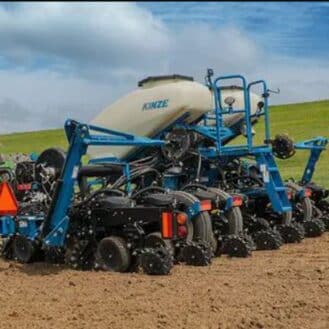There are a number of different types of tractors, and it’s important to start by understanding these before identifying the one best suited for the type of work you’re planning to do. They generally fall into one of the following categories: straddle, forestry, narrow, low-profile and sub-compact.
Straddle tractors are agricultural tractors with three or four wheels, enabling work on elevated crops. For example, in viticulture, a 2-row or 3-row tractor can straddle 1 or 2 lines of vines respectively. Various work equipment can be associated with this type of tractor to perform tasks such as spreading, spraying phytosanitary products, harvesting, tilling, etc.
Forestry tractors are power-driven vehicles, either on wheels or on tracks, with at least two axles. Their function depends essentially on their tractive power, which is specially designed to pull, push, carry or actuate certain implements, machines or trailers intended for use in forestry.
Narrow tractors have a small width. They are easy to handle and less expensive than other types of tractors, but they also have less engine power. They are often used by arboriculturists to access between rows. They are also used in harvesting, fertilizing and weeding operations.
For low-profile tractors, the bottom of the tractor is 18 inches or less above the ground reaching 60 inches or lower. They are designed for low-clearance applications, giving the operator better visibility in front of the tractor.
Sub-compact tractors are designed with a smaller frame. They provide the strength and versatility of a compact utility tractor, with the agile handling of a 4WD vehicle and feel of a garden tractor.

Tractor VIRTUS STAGE IV series – Same








